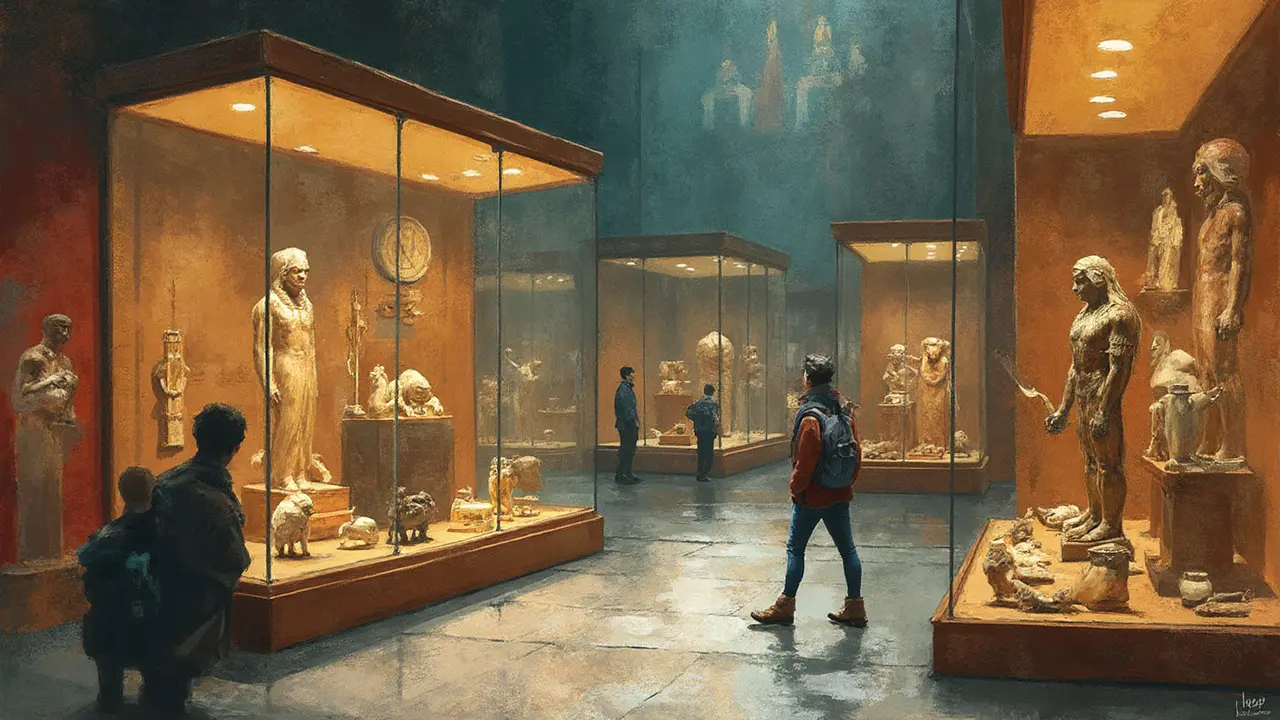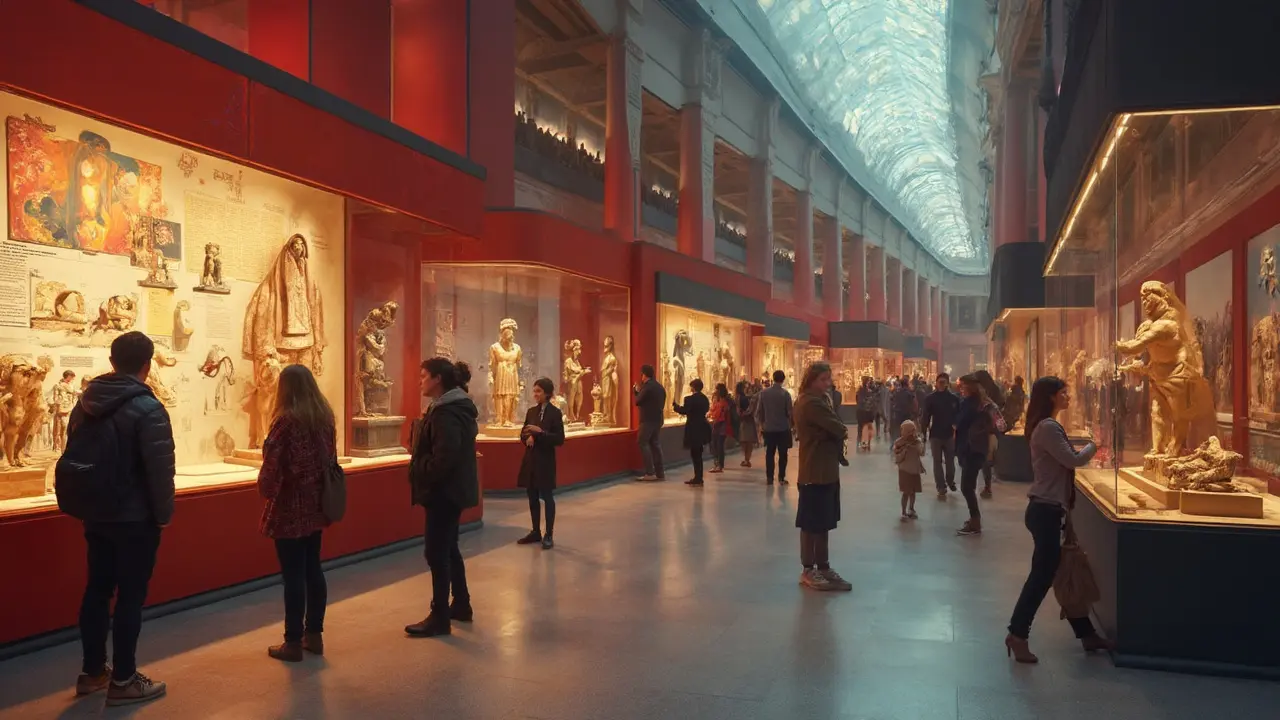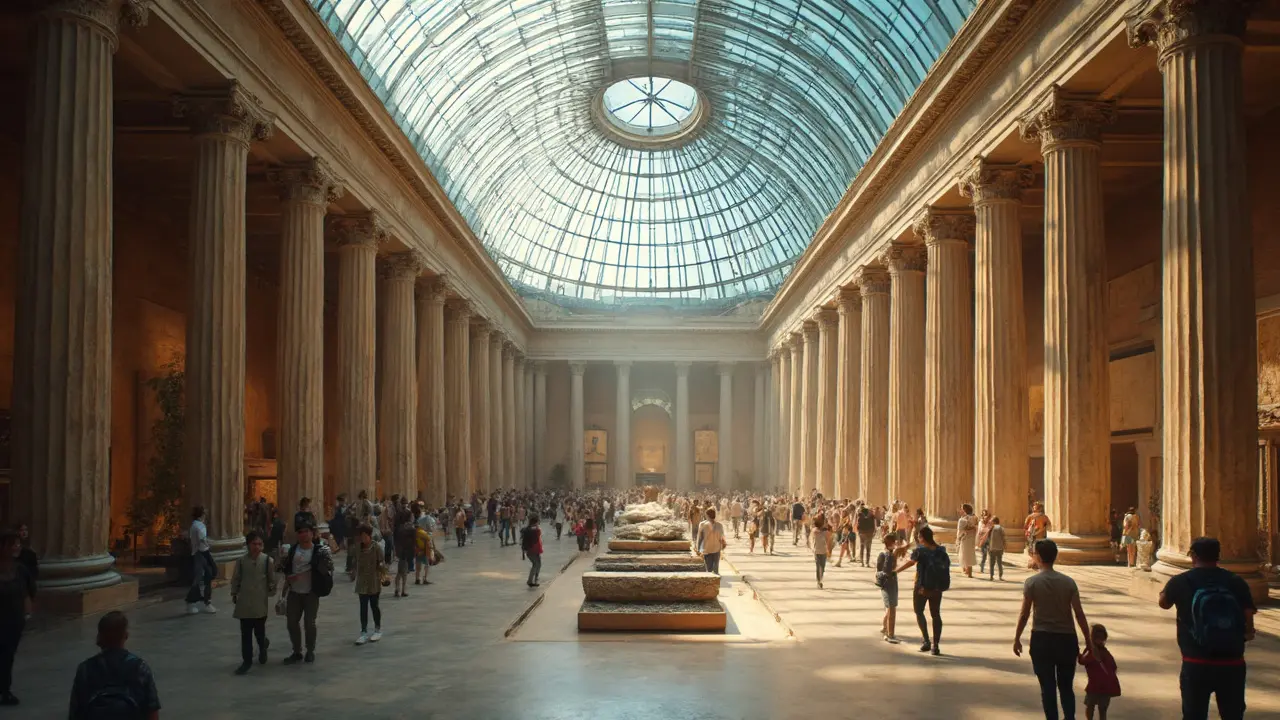Time flies by on Great Russell Street. In London, there’s nowhere quite like the British Museum, sitting proud in Bloomsbury with its pale columns and inescapable buzz. You’ll see queues spiralling by 10am—tourists in trainers, hurried City folks with coffees, school groups all eyes and questions. Why do they all flock here? Maybe it’s the idea that inside, under the grand glass roof, you can travel from Mesopotamia to Victorian England without leaving London’s drizzle.
Stepping Into History: The Museum’s Story and Local Connections
Most Londoners know the British Museum like the Thames, a fixture in the city’s landscape since 1759. Sir Hans Sloane’s vast and weird collection of curios kicked things off, a true London story: one eccentric collector, the government’s deep pocket, and a public collection for everyone, from Cockney cabbies to the Queen herself. The old reading room has hosted legends—Marx scribbled here, Gandhi pondered, Orwell leafed through books. You almost feel the ghosts when you pass through those heavy wooden doors.
Bring up the British Museum to a local, and chances are you’ll get stories. "I skived off school to see the Parthenon Marbles," one old hand will say. Another will remember family Sundays, chasing siblings past the Assyrian lions. This is London’s front room: sprawling, democratic, a bit chaotic. Free entry—always has been, always should be.
Take a breather in the Great Court, which cost a cool £100 million to build, and is now one of the most Instagrammed spots in the capital. If you fancy a cuppa, Liberties and Store St. Espresso are just minutes away—after all, a proper London day out needs good coffee. The museum is more than a gallery, it’s the living memory of the city, tangled up with the local area. At nearby Bookmarks (the socialist bookshop), political debate rages on, echoing the radical thinkers who once haunted the Reading Room.

Unmissable Treasures: What Not to Miss (and What Locals Love)
Everyone talks about the Rosetta Stone—of course they do, it’s basically the key that unlocked ancient Egyptian scripts. Expect crowds, selfie sticks, kids humming with excitement. But Londoners have secret corners in the Museum they love.
Don’t miss the Sutton Hoo hoard, unearthed in Suffolk on the eve of war. Its helmet, all dragon and glittering garnet, is a national icon, giving British history its own epic saga to rival Viking or Roman tales. The Lewis Chessmen are another quirky favourite: small, walrus-ivory warriors dug up on a Scottish beach, grinning their way into the hearts of Harry Potter fans and chess nerds alike.
The Enlightenment Gallery is a local’s secret. It smells of old books and adventure, and it’s organized just as Sloane liked it: crocodile skulls cheek by jowl with Benin Bronzes, dusty tomes jumbled with star charts. “A walk through the whole of knowledge in one room,” as curator Janina Ramirez once put it. Up for something more offbeat? Hunt down Lindow Man—the famous bog body—preserved in a glass box, eerily quiet, older than London itself.
London’s yearly events draw new crowds all the time. Every November, Diwali installations glow in the halls. The Queen’s Jubilee brought dress-up tours and special exhibits. If you want to see cutting-edge temporary shows, buy tickets for blockbuster exhibits months ahead—Queer History, Ancient Egypt: The Book of the Dead, and Scythians have packed out in recent years. Locals know the trick: go late on Fridays, when music and cocktails echo in the galleries, and the crowds thin out.

Making the Most of Your Visit: Practical Tips, Events, and Local Flavours
The British Museum can feel overwhelming—eight million objects, two Picasso’s worth of floor space. Best plan your day. Locals download the museum’s official app, which gives you a handy map; or you can grab a paper brochure, still free at the info desk. If you’re up for the full deep dive, join one of the short, daily ‘eye opener’ tours, or book a themed walk: ancient Egypt, women in history, hidden London. These fill up, especially on half-term.
Food can be a gamble in big attractions but the Court Café’s scones are the real deal. If you’d rather avoid tourist prices, pop round the corner to Honey & Co or grab a picnic from Leather Lane Market. Remember, only clear water bottles are allowed inside most galleries—museum staff are famously vigilant. For families, the Samsung Digital Discovery Centre runs workshops where kids can code robots or dig for ‘fossils’.
Accessibility’s solid too: step-free entrances both ends, tactile maps, and hush-hush chill-out zones for anyone overwhelmed. Bike racks are everywhere, thanks to Camden Council, and there’s even a Santander Cycles docking station just two streets away.
Locals balance visits with other nearby gems. The Museum Tavern opposite does a stellar pie and mash (the steak and ale has loyal fans). Russell Square and its gardens are ideal for a break. Curious? Check out late-night events, where the Museum feels utterly different—shadows, live jazz, pop-up bars, talks by real Egyptologists or classical musicians busking by the mummies.
| Iconic Exhibit | Year Discovered | Museum Room |
|---|---|---|
| Rosetta Stone | 1799 | Room 4 |
| Sutton Hoo Helmet | 1939 | Room 41 |
| Lewis Chessmen | 1831 | Room 40 |
| Lindow Man | 1984 | Room 50 |
| Benin Bronzes | 1897 | Room 25 |
When you walk past the Elgin Marbles, you step into a live debate: should these treasures stay, or go back? Londoners argue it in pubs and on the news. According to Neil MacGregor, a former Director, "The Museum is a place not just to see objects, but to think about what they mean for us."
The British Museum is not just a collection of objects—it’s a forum where ideas about art, power, and identity collide.
So if you’re in London—whether six generations deep or a weekend visitor—don’t skip the British Museum. Know this: it’s not just for history buffs, but for anyone who’s ever wondered where we fit in the restless story of civilization. Just don’t forget your umbrella.





